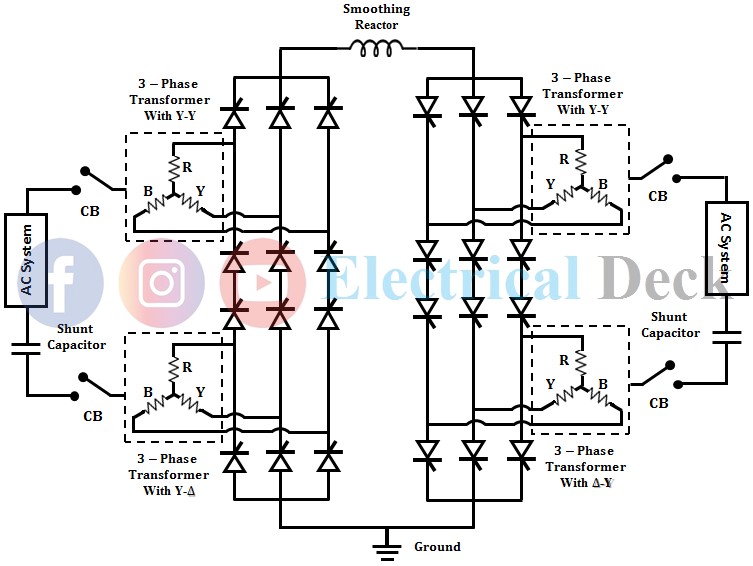The system transmits the energy between two networks from the same location or place, then such types of systems are known as back-to-back HVDC coupling systems. In this type of plant, both the rectifiers and inverters are installed in the same plant or station and are connected to each other with the help of a dc line. In these systems, the length of dc lines is kept as small as possible. The below shows the back-to-back HVDC coupling system.
The dc voltage between two converters can be freely selected because of the short length of the conductor. A back-to-back system gives or provides more stability for the system. The power can be transmitted very fast and accurately.
The power flow can be controlled in a system by controlling the magnitude and direction of power in a network. By using these types of systems the power can be transmitted from one station to another station or it can be received from the other terminals i.e., these systems possess the ability to receive or transmit power from the same station itself.
For example, the Vindhyanchal back-to-back system in India, which has a capacity of 250MW is capable of transmitting and receiving power in between Uttar Pradesh and Madhya Pradesh power grids i.e., from the northern region to the western region.


